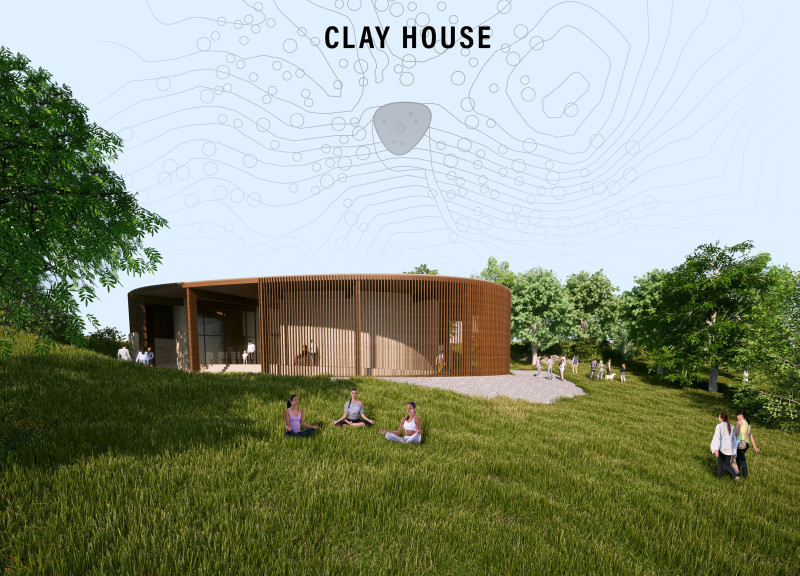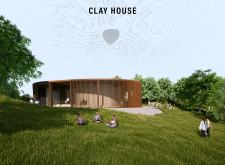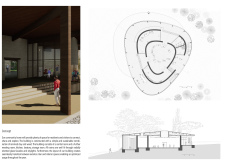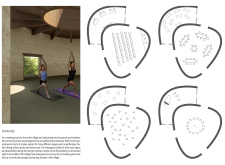5 key facts about this project
The Clay House is located in a village and serves as a community home, providing spaces for residents and visitors to gather and interact. The design focuses on creating a welcoming environment that encourages connection. With a central gathering area at its heart, the building includes additional rooms such as meeting spaces, a kitchen, a lavatory, and storage facilities. This thoughtful layout promotes a sense of togetherness while prioritizing practical use.
Spatial Organization
The layout of the building emphasizes usability and community engagement. The central room acts as the main meeting point, while separate areas offer flexibility for various activities. Natural light plays a key role in the design. Radial glass facades and skylights fill the interior spaces with warm daylight, enhancing the atmosphere and keeping the connection to the outside world strong.
Sustainable Design
Sustainability is a cornerstone of the Clay House. The focus is on reducing the environmental impact through careful choices in materials and construction methods. The building’s walls, floors, and shingles are made from clay sourced locally. This approach not only lowers transportation emissions but also blends the structure with its natural setting, creating a harmonious relationship with the landscape.
Material Integration
The roof and facade utilize wood gathered from nearby areas, aligning with the goal of using local resources. This choice supports the building's durability and strengthens its bond with the region. Strip foundations made from clay bricks provide a stable base, further emphasizing the commitment to sustainability and local materials in the design.
Community Functionality
The Clay House is designed to function as a versatile space for various community activities. It can host social events, theater performances, and communal meals. Interspaces offer opportunities for more activities, especially during warmer months, making the facility adaptable to the needs of its users. Positioned centrally within the village, it enhances accessibility and promotes connections among different parts of the community.
The design of the Clay House highlights the significance of community interaction and environmental responsibility at every level. The spaces invite people in, encouraging them to share experiences and strengthen bonds within the village.






















































